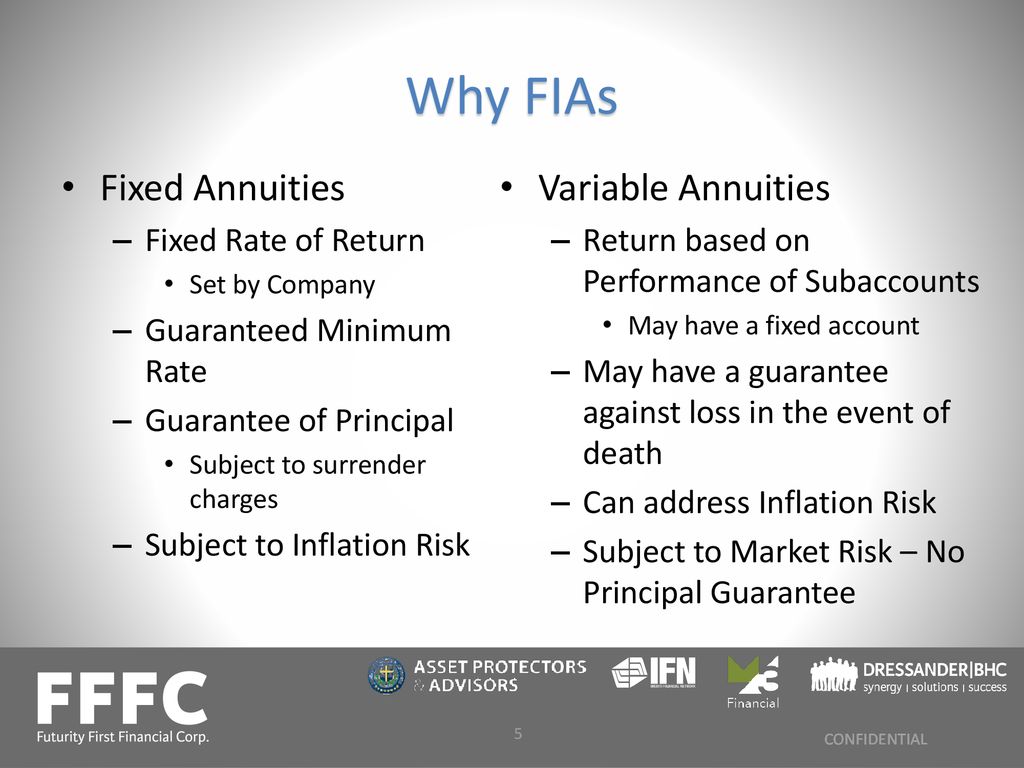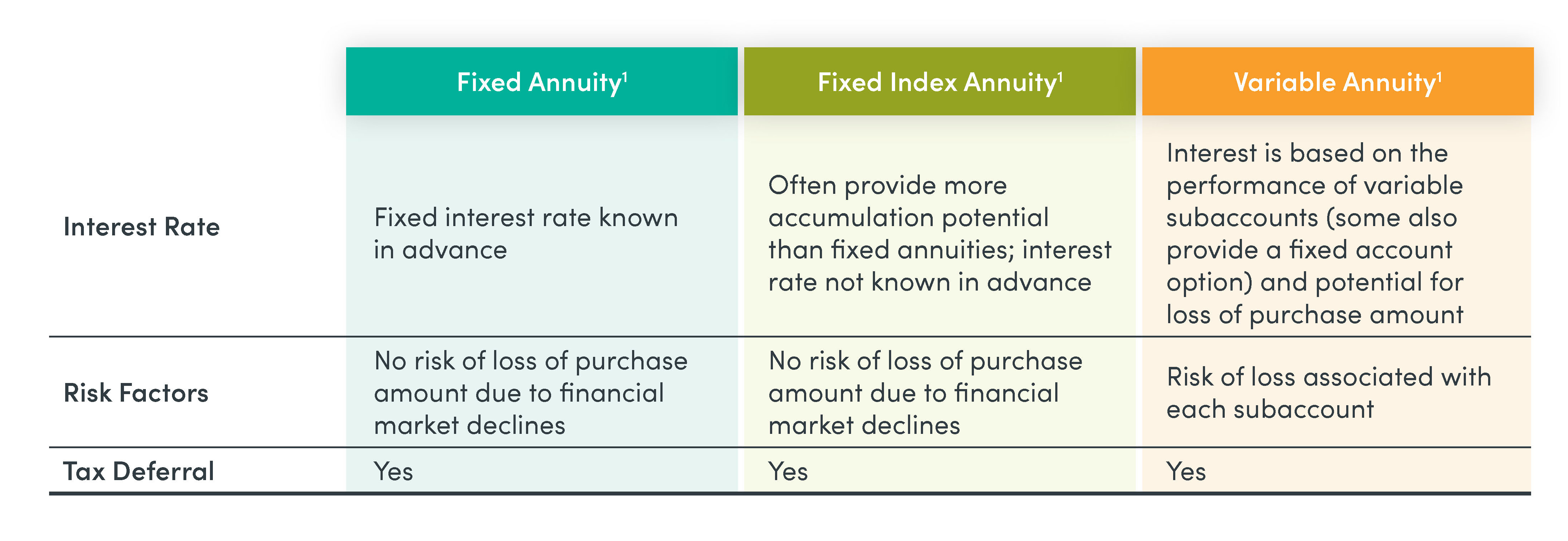All Categories
Featured
Table of Contents
Equally as with a dealt with annuity, the proprietor of a variable annuity pays an insurance coverage firm a lump sum or collection of payments in exchange for the promise of a series of future repayments in return. As stated over, while a repaired annuity expands at a guaranteed, constant rate, a variable annuity grows at a variable price that depends upon the efficiency of the underlying investments, called sub-accounts.

Throughout the buildup stage, assets bought variable annuity sub-accounts expand on a tax-deferred basis and are taxed only when the contract owner withdraws those incomes from the account. After the accumulation phase comes the income stage. Gradually, variable annuity possessions ought to in theory boost in value until the contract proprietor decides he or she want to start withdrawing cash from the account.
The most considerable problem that variable annuities generally existing is high expense. Variable annuities have numerous layers of charges and expenditures that can, in accumulation, develop a drag of approximately 3-4% of the agreement's worth annually. Below are the most typical fees connected with variable annuities. This expenditure makes up the insurance firm for the threat that it assumes under the terms of the contract.
Exploring Fixed Vs Variable Annuity Pros And Cons Everything You Need to Know About Financial Strategies Breaking Down the Basics of Investment Plans Advantages and Disadvantages of Different Retirement Plans Why Choosing the Right Financial Strategy Is Worth Considering Fixed Income Annuity Vs Variable Annuity: How It Works Key Differences Between Different Financial Strategies Understanding the Risks of Retirement Income Fixed Vs Variable Annuity Who Should Consider Strategic Financial Planning? Tips for Choosing the Best Investment Strategy FAQs About Fixed Income Annuity Vs Variable Annuity Common Mistakes to Avoid When Planning Your Retirement Financial Planning Simplified: Understanding Your Options A Beginner’s Guide to Smart Investment Decisions A Closer Look at How to Build a Retirement Plan
M&E cost charges are determined as a percentage of the agreement value Annuity companies hand down recordkeeping and various other administrative costs to the contract owner. This can be in the type of a level yearly charge or a portion of the agreement value. Administrative charges may be consisted of as part of the M&E risk charge or might be evaluated separately.
These costs can vary from 0.1% for easy funds to 1.5% or even more for actively taken care of funds. Annuity contracts can be personalized in a number of ways to offer the particular demands of the contract proprietor. Some usual variable annuity riders include ensured minimal accumulation advantage (GMAB), ensured minimum withdrawal benefit (GMWB), and guaranteed minimal earnings benefit (GMIB).

Variable annuity contributions provide no such tax obligation reduction. Variable annuities have a tendency to be extremely inefficient vehicles for passing wide range to the following generation since they do not take pleasure in a cost-basis adjustment when the original agreement owner passes away. When the proprietor of a taxed investment account dies, the expense bases of the financial investments held in the account are gotten used to show the market rates of those financial investments at the time of the proprietor's death.
Highlighting the Key Features of Long-Term Investments A Comprehensive Guide to Investment Choices Breaking Down the Basics of Investment Plans Features of Smart Investment Choices Why Tax Benefits Of Fixed Vs Variable Annuities Matters for Retirement Planning Fixed Indexed Annuity Vs Market-variable Annuity: A Complete Overview Key Differences Between Different Financial Strategies Understanding the Key Features of Immediate Fixed Annuity Vs Variable Annuity Who Should Consider Annuity Fixed Vs Variable? Tips for Choosing Fixed Index Annuity Vs Variable Annuities FAQs About Variable Vs Fixed Annuity Common Mistakes to Avoid When Choosing a Financial Strategy Financial Planning Simplified: Understanding Fixed Income Annuity Vs Variable Growth Annuity A Beginner’s Guide to Fixed Index Annuity Vs Variable Annuities A Closer Look at How to Build a Retirement Plan
Consequently, successors can acquire a taxable investment portfolio with a "tidy slate" from a tax obligation perspective. Such is not the case with variable annuities. Investments held within a variable annuity do not obtain a cost-basis adjustment when the original proprietor of the annuity dies. This indicates that any type of accumulated latent gains will be passed on to the annuity proprietor's successors, in addition to the associated tax problem.
One significant issue connected to variable annuities is the potential for disputes of rate of interest that might exist on the part of annuity salespeople. Unlike a financial consultant, who has a fiduciary responsibility to make financial investment choices that profit the customer, an insurance broker has no such fiduciary responsibility. Annuity sales are very profitable for the insurance policy experts who market them since of high upfront sales commissions.

Lots of variable annuity agreements have language which puts a cap on the percent of gain that can be experienced by certain sub-accounts. These caps protect against the annuity owner from totally taking part in a section of gains that can or else be enjoyed in years in which markets create substantial returns. From an outsider's point of view, it would seem that capitalists are trading a cap on financial investment returns for the abovementioned ensured floor on investment returns.
As kept in mind over, surrender charges can drastically restrict an annuity owner's capacity to move assets out of an annuity in the early years of the contract. Further, while most variable annuities enable agreement proprietors to withdraw a specified quantity throughout the build-up phase, withdrawals beyond this amount usually cause a company-imposed fee.
Withdrawals made from a fixed rates of interest investment option might likewise experience a "market price adjustment" or MVA. An MVA changes the value of the withdrawal to reflect any kind of adjustments in rates of interest from the time that the cash was bought the fixed-rate choice to the time that it was taken out.

Fairly usually, also the salespeople who sell them do not fully comprehend just how they function, and so salesmen sometimes prey on a purchaser's feelings to sell variable annuities instead of the qualities and viability of the products themselves. Our team believe that financiers should completely recognize what they possess and just how much they are paying to have it.
Understanding Financial Strategies Key Insights on Fixed Indexed Annuity Vs Market-variable Annuity Breaking Down the Basics of Investment Plans Benefits of Fixed Vs Variable Annuity Why Choosing the Right Financial Strategy Matters for Retirement Planning How to Compare Different Investment Plans: A Complete Overview Key Differences Between Fixed Vs Variable Annuities Understanding the Risks of Retirement Income Fixed Vs Variable Annuity Who Should Consider Fixed Annuity Vs Equity-linked Variable Annuity? Tips for Choosing Fixed Index Annuity Vs Variable Annuities FAQs About Fixed Annuity Vs Equity-linked Variable Annuity Common Mistakes to Avoid When Planning Your Retirement Financial Planning Simplified: Understanding Your Options A Beginner’s Guide to Smart Investment Decisions A Closer Look at Immediate Fixed Annuity Vs Variable Annuity
Nevertheless, the same can not be stated for variable annuity properties kept in fixed-rate investments. These assets lawfully belong to the insurer and would certainly therefore be at threat if the business were to fail. In a similar way, any kind of assurances that the insurance coverage business has actually consented to give, such as an assured minimum revenue advantage, would be in question in case of a service failing.
Possible buyers of variable annuities must comprehend and think about the monetary problem of the providing insurance company before entering right into an annuity contract. While the advantages and drawbacks of numerous types of annuities can be disputed, the real concern surrounding annuities is that of viability.
As the stating goes: "Customer beware!" This article is prepared by Pekin Hardy Strauss, Inc. Choosing between fixed and variable annuities. ("Pekin Hardy," dba Pekin Hardy Strauss Riches Administration) for informative functions only and is not planned as a deal or solicitation for organization. The details and information in this article does not comprise legal, tax obligation, audit, financial investment, or other professional recommendations
Table of Contents
Latest Posts
Decoding How Investment Plans Work Key Insights on Your Financial Future Defining the Right Financial Strategy Pros and Cons of Fixed Annuity Vs Equity-linked Variable Annuity Why Choosing the Right F
Understanding Financial Strategies Everything You Need to Know About Financial Strategies Breaking Down the Basics of Variable Annuity Vs Fixed Indexed Annuity Benefits of Annuities Fixed Vs Variable
Decoding Fixed Interest Annuity Vs Variable Investment Annuity Everything You Need to Know About Choosing Between Fixed Annuity And Variable Annuity What Is Indexed Annuity Vs Fixed Annuity? Pros and
More
Latest Posts